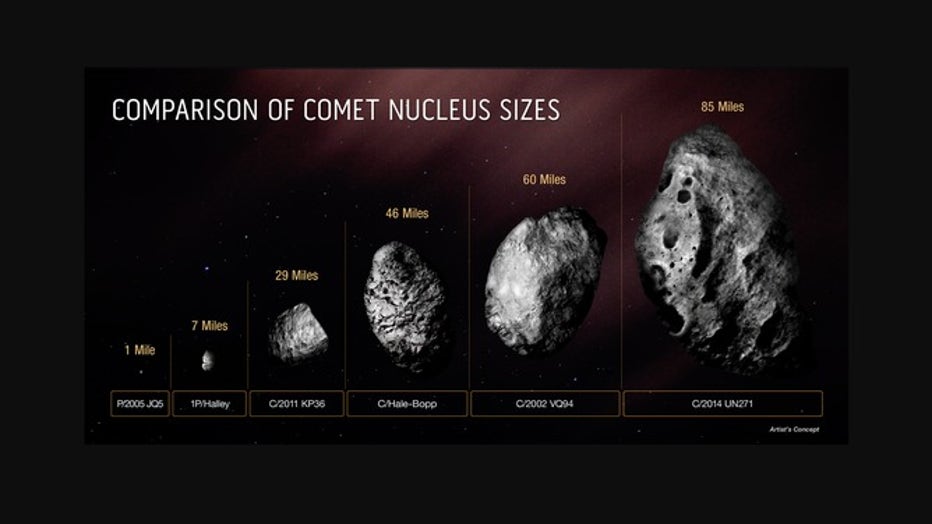Did you miss the Northern Lights? Catch the comet in the sky this weekend

Will the northern lights dazzle our skies tonight?
Will the aurora borealis, or northern lights return to our skies tonight for another dazzling display? FOX 5's Nick Gregory has the story.
NEW YORK - This weekend, a rare celestial event will take place as Comet C/2023 A3 Tsuchinshan-Atlas makes its closest approach to Earth in 80,000 years.
The comet, which came closest to the Sun in September, will pass within 44 million miles of our planet.
Because of this proximity, it will be visible in the western sky after sunset each evening until around mid to late October.
What does a comet look like in the sky?
"Comet C/2023 A3 poses no threat to Earth," Peter Veres, a research scientist at the Minor Planet Center, told FOX Weather. "We have a clear understanding of the comet's orbit, which is being refined with ongoing observations at our center, the MPC."
The comet was discovered earlier this year during routine monitoring by observers at China’s Tsuchinshan Observatory.
Astronauts on the International Space Station have spotted the Tsuchinshan-Atlas comet during its orbit around the Sun.

View of comet C/2023 A3 Tsuchinshan-ATLAS from the International Space Station. (NASA)
On Sept.19, they took a photo of the comet, highlighting its dusty tail against the backdrop of space.
Astronomers explain that as a comet approaches the Sun, its tail typically becomes longer.
Comets are remnants from the solar system's formation about 4.5 billion years ago, made up of ice, dust, rock, and gases.
When will the comet be visible?

C/2014 UN271 (Bernardinelli-Bernstein) Telescope is barreling towards the heart of our solar system. (NASA)
The comet should be visible until the next Full Moon, which is the Full Hunter’s Moon on October 17.
Peak viewing will occur between October 12-26.
Weather during the comet
The weather will need to stay clear to see anything at night.
Saturday night looked mainly clear, with possible high cirrus clouds late Saturday. Sunday night may have clouds and showers, clearing by Monday for good viewing conditions.
Astronomers estimate that once the comet disappears from view, it may not be seen again for another 80,000 years, provided it survives its journey through the solar system.
If you miss the Tsuchinshan-Atlas comet, there aren’t many celestial events left this year.
You can still look forward to three Full Moons and a close approach of Jupiter, all happening before the winter solstice.
FOX Weather's Andrew Wulfeck contributed to this report.


